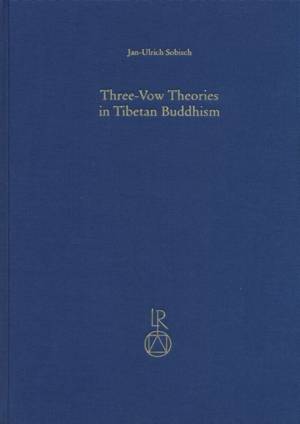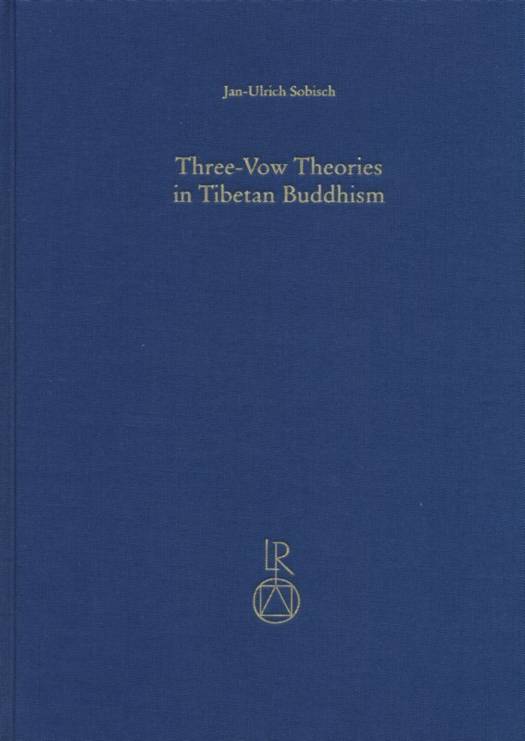
- Afhalen na 1 uur in een winkel met voorraad
- Gratis thuislevering in België vanaf € 30
- Ruim aanbod met 7 miljoen producten
- Afhalen na 1 uur in een winkel met voorraad
- Gratis thuislevering in België vanaf € 30
- Ruim aanbod met 7 miljoen producten
Zoeken
Three-Vow Theories in Tibetan Buddhism
A Comparative Study of Major Traditions from the Twelfth Through Nineteenth Centuries
Jan-Ulrich Sobisch
€ 140,45
+ 280 punten
Omschrijving
"Three Vow Theories in Tibetan Buddhism" is the first comparative study of the interrelations of the three Buddhist systems of vows as explained by some of the greatest scholars and adepts of Tibet. Although conventional monastic Buddhism insists on a strict avoidance of evil deeds, the Mahayana, which stresses as foremost the welfare of others, allows the occasional ignoring of moral rules if altruistically motivated, whereas the Vajrayana goes so far as to teach that the yogi is sometimes obliged to transgress a moral code.
The attempts in Tibet since the twelfth century to harmonize the different vows of Pratimoksa, Mahayana, an Vajrayana led to lively controversies and ingenious exegetic strategies. One strategy was to postulate the superiority of Vajrayana either trough an automatic "upward transformation" of the "lower vows" or a complete "outshining" of conventional moral codes. Many masters stressed that particular practices of the Vajrayana, such as sexual yoga, were exceptions that only a few excedingly accomplished yogis could carry out.
To clarify the historical background, brief biographies of the main authors on this theme are presented, including for the Indian pandita Vibhuticandra, the Tibetan masters Gorampa (Sakya), Gampopa (Kayu), Karma Thrinlay and Karma Ngedön (Karma Kabrgyu), Kongtrül (Rime), Jigten Gönpo and Dorje Sherab (Drigung Kargyu), and Ngari Panchen and Lochen Dharmashri (Nyingma).
The present book is the doctoral dissertation (U. Hamburg, 1999) of Dr. Jan-Ulrich Sobisch, whose investigation at the University of Munich of the 16th-century Sakya master Ameshab is now nearing completion.
The attempts in Tibet since the twelfth century to harmonize the different vows of Pratimoksa, Mahayana, an Vajrayana led to lively controversies and ingenious exegetic strategies. One strategy was to postulate the superiority of Vajrayana either trough an automatic "upward transformation" of the "lower vows" or a complete "outshining" of conventional moral codes. Many masters stressed that particular practices of the Vajrayana, such as sexual yoga, were exceptions that only a few excedingly accomplished yogis could carry out.
To clarify the historical background, brief biographies of the main authors on this theme are presented, including for the Indian pandita Vibhuticandra, the Tibetan masters Gorampa (Sakya), Gampopa (Kayu), Karma Thrinlay and Karma Ngedön (Karma Kabrgyu), Kongtrül (Rime), Jigten Gönpo and Dorje Sherab (Drigung Kargyu), and Ngari Panchen and Lochen Dharmashri (Nyingma).
The present book is the doctoral dissertation (U. Hamburg, 1999) of Dr. Jan-Ulrich Sobisch, whose investigation at the University of Munich of the 16th-century Sakya master Ameshab is now nearing completion.
Specificaties
Betrokkenen
- Auteur(s):
- Uitgeverij:
Inhoud
- Aantal bladzijden:
- 596
- Taal:
- Engels
- Reeks:
- Reeksnummer:
- nr. 1
Eigenschappen
- Productcode (EAN):
- 9783895002632
- Verschijningsdatum:
- 1/07/2002
- Uitvoering:
- Hardcover
- Formaat:
- Genaaid
- Afmetingen:
- 240
- Gewicht:
- 1133 g

Alleen bij Standaard Boekhandel
+ 280 punten op je klantenkaart van Standaard Boekhandel
Beoordelingen
We publiceren alleen reviews die voldoen aan de voorwaarden voor reviews. Bekijk onze voorwaarden voor reviews.








